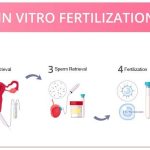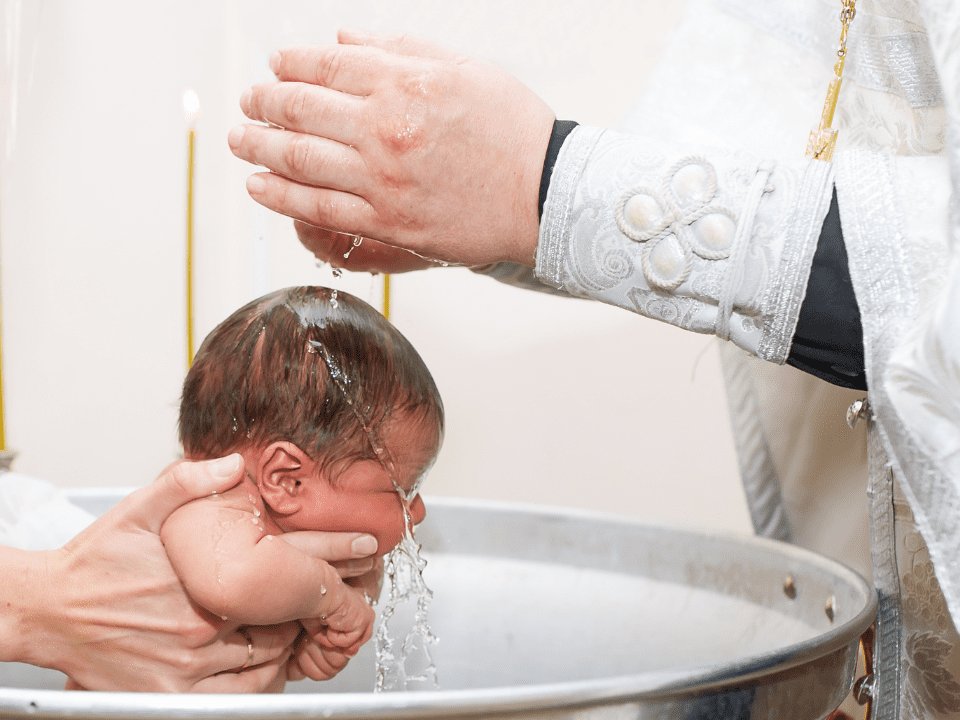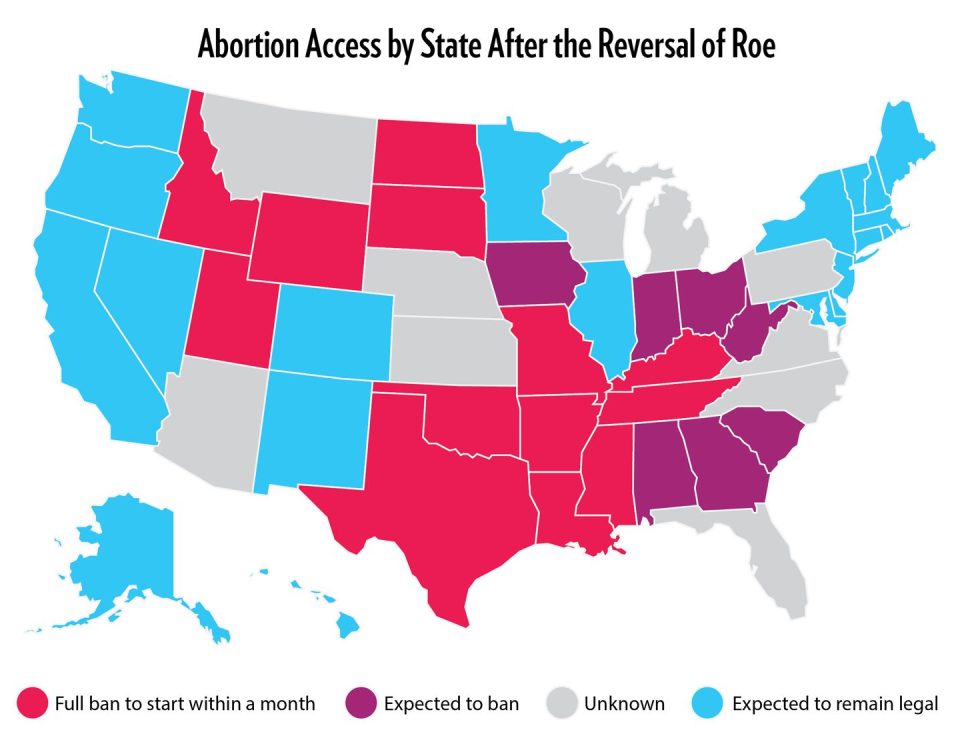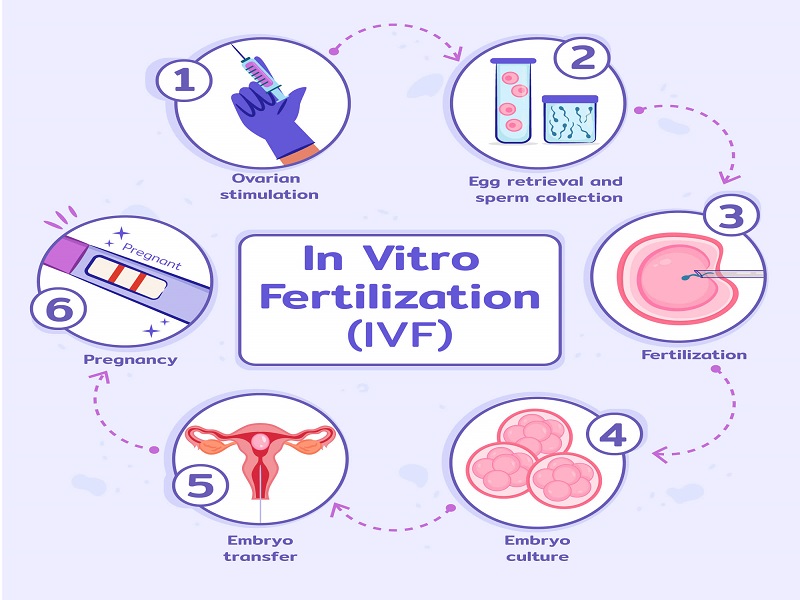
What Are the 5 Stages of IVF? Your Complete Guide to the Journey
April 14, 2025
When Was IVF Invented? A Deep Dive into the History and Future of In Vitro Fertilization
April 14, 2025How Much Does It Cost to Do IVF?
In vitro fertilization (IVF) is a life-changing option for many people dreaming of starting a family. But let’s be real—when you start digging into it, the first question that pops up is usually, “How much is this going to cost me?” It’s a big deal, and the numbers can feel overwhelming. The good news? You’re not alone in wondering, and I’m here to break it all down for you—step by step, dollar by dollar. We’ll cover the basics, the hidden extras, and even some fresh insights you might not find everywhere else. So, grab a coffee, and let’s dive into the world of IVF costs together.
What’s the Average Cost of IVF in the U.S.?
If you’re in the United States, the price tag for a single IVF cycle typically lands between $12,000 and $25,000. That’s the ballpark most clinics quote as a starting point. But here’s the catch—it’s just an average, and your actual cost could swing higher or lower depending on where you live, the clinic you choose, and what your body needs to make it work.
For example, a basic IVF cycle usually includes things like:
- Monitoring your ovaries with ultrasounds and blood tests.
- Medications to kick your egg production into gear.
- The egg retrieval procedure (yep, that’s when they go in and grab those eggs).
- Fertilizing the eggs in a lab with sperm.
- Transferring the embryo back into your uterus.
Sounds straightforward, right? But that $12,000 to $25,000 doesn’t always cover everything. A 2023 report from the American Society for Reproductive Medicine (ASRM) pegged the median cost at around $19,000 for one cycle, not including extras like genetic testing or donor eggs. And here’s a reality check: most people don’t get pregnant on the first try. Studies show the average patient goes through two to three cycles, which could push your total closer to $40,000 or even $60,000 over time.
So, why the big range? Location plays a huge role. In big cities like New York or Los Angeles, you might pay $20,000 or more per cycle because of higher demand and overhead. Meanwhile, in smaller towns or rural areas, it could dip closer to $12,000. Your clinic’s reputation matters too—top-tier spots with high success rates often charge a premium.
Breaking Down the IVF Process and Its Costs
To really get a handle on what you’re paying for, let’s walk through the IVF journey and attach some dollar signs to each step. Think of it like a roadmap—knowing where the money goes can help you plan better.
Step 1: Initial Consultation and Testing
Before anything starts, you’ll sit down with a fertility specialist. This first visit usually costs $200 to $500, depending on the clinic. They’ll run tests—blood work, ultrasounds, maybe a semen analysis for your partner—to figure out what’s going on. These can add another $500 to $1,500 to your bill. It’s not cheap, but it’s crucial for tailoring the treatment to you.
Step 2: Medications
Next up, you’ll need drugs to boost your egg production. These aren’t your average over-the-counter pills—they’re specialized hormones, and they come with a hefty price. Expect to spend $3,000 to $7,000 per cycle on medications alone. The exact amount depends on how your body responds. Some people need higher doses or longer courses, which can push costs toward the upper end.
Step 3: Egg Retrieval and Lab Work
Once your eggs are ready, the doctor retrieves them in a quick procedure. This step, plus the lab work to fertilize them with sperm, is usually bundled into the “base fee” of $8,000 to $15,000. Anesthesia’s included here too—typically $500 to $1,000 of that total. If your clinic uses advanced techniques like intracytoplasmic sperm injection (ICSI), where they inject sperm directly into the egg, tack on another $1,000 to $2,000.
Step 4: Embryo Transfer
After the eggs are fertilized and grow into embryos, one (or sometimes two) gets placed into your uterus. This is often part of the base fee, but if you’re using frozen embryos from a previous cycle, it could cost $3,000 to $6,000 extra for thawing and transfer.
Step 5: Follow-Up and Storage
Post-transfer, you’ll have checkups to see if you’re pregnant—usually a few hundred bucks more. And if you’ve got extra embryos? Freezing them for later runs about $1,000 upfront, plus $300 to $600 a year to keep them stored.
Here’s a quick snapshot in a table to keep it clear:
| IVF Step | Cost Range |
|---|---|
| Initial Consultation | $200 – $500 |
| Diagnostic Tests | $500 – $1,500 |
| Medications | $3,000 – $7,000 |
| Egg Retrieval + Lab Work | $8,000 – $15,000 |
| Embryo Transfer (Fresh) | Included in base fee |
| Frozen Embryo Transfer | $3,000 – $6,000 |
| Embryo Freezing | $1,000 (plus $300-$600/year) |
What Drives IVF Costs Up (or Down)?
Not every IVF journey looks the same, and that’s why costs can vary so much. Let’s unpack the big factors that can either balloon your bill or, in some cases, trim it down.
Your Age and Health
Age is a huge player. If you’re under 35, your body might respond better to meds, meaning fewer drugs and a lower cost. Over 40? You might need more cycles or higher doses, driving expenses up. Health conditions like polycystic ovary syndrome (PCOS) or low sperm count can also mean extra steps—like ICSI or donor materials—that add to the tab.
Donor Eggs or Sperm
If you need donor eggs, brace yourself: that’s $20,000 to $45,000 extra per cycle. Why so pricey? Donors get compensated (often $5,000 to $10,000), and there are legal and medical fees too. Donor sperm is cheaper—$1,000 to $1,500 per vial—but it still bumps up the total.
Genetic Testing
Want to screen embryos for genetic issues? Preimplantation genetic testing (PGT) costs $3,000 to $6,000 for a batch of embryos, plus $300 to $500 per embryo tested. It’s optional, but many choose it for peace of mind, especially if there’s a family history of disorders.
Insurance (or Lack Thereof)
Here’s where it gets tricky. Only about 20 states in the U.S. mandate some form of infertility coverage, and even then, IVF isn’t always included. If you’re lucky, insurance might cover part of the meds or testing, shaving off a few thousand. Without it? You’re footing the whole bill. Check your policy—some employers, like tech giants, now offer IVF benefits as a perk.
Success Rates and Multiple Cycles
The ASRM says about 40% of women under 35 get pregnant on their first cycle. Over 40, that drops to 10-15%. If it doesn’t work the first time, you’re looking at another round—or more. Some clinics offer “multi-cycle packages” (think $25,000 for three tries), which can save money compared to paying per cycle.
Hidden Costs You Might Not Expect
Beyond the obvious, there are sneaky expenses that can catch you off guard. These don’t always show up in the glossy clinic brochures, but they’re real—and they add up.
Travel and Time Off Work
Live far from a clinic? Gas, flights, or even hotel stays could tack on $500 to $2,000 per cycle. Plus, you’ll need time off for appointments and recovery—potentially unpaid. A 2024 study from Stanford found couples lose an average of $2,000 in wages per IVF cycle due to missed work.
Emotional Support
IVF is a rollercoaster. Therapy or support groups (virtual or in-person) can run $50 to $150 per session. It’s not a “medical” cost, but it’s vital for many. One mom I spoke to said, “I didn’t budget for counseling, but it saved my sanity after two failed cycles.”
Unexpected Complications
About 5% of IVF patients face ovarian hyperstimulation syndrome (OHSS), where ovaries overreact to meds. Mild cases mean rest; severe ones might need a hospital stay—$5,000 or more if uninsured. It’s rare, but worth knowing.
How to Make IVF More Affordable
Feeling sticker-shocked? Don’t lose hope—there are ways to ease the financial sting. Here’s a practical game plan to keep costs in check.
Shop Around
Clinics vary wildly in price and success rates. A place charging $12,000 with a 50% success rate might beat a $20,000 spot with the same odds. Look at CDC fertility clinic data—it’s public and shows outcomes by location.
Ask About Discounts
Some clinics offer:
- Military or teacher discounts: 10-20% off.
- Multi-cycle deals: Pay upfront for 2-3 cycles at a lower rate.
- Shared risk programs: Get a refund if IVF fails after a set number of tries (usually $20,000-$30,000 total).
Explore Financing
Loans or payment plans can spread costs over time. Companies like Future Family offer IVF-specific loans with rates as low as 6%. Credit cards work too, but watch those interest rates—18% APR can double your debt fast.
Check Grants and Nonprofits
Organizations like Baby Quest or the Tinina Q. Cade Foundation give out $5,000 to $15,000 grants. They’re competitive, but free money’s worth a shot. Apply early—deadlines sneak up.
Mini IVF: A Cheaper Alternative?
“Mini IVF” uses lower drug doses, cutting med costs to $1,000-$2,000 per cycle. Total price? Around $5,000-$7,000. It’s less intense, but success rates drop too—20-25% versus 40% for standard IVF. Good for younger patients or those sensitive to meds.
Interactive Quiz: What’s Your IVF Budget?
Let’s make this personal. Answer these quick questions to ballpark your costs:
- How old are you?
- Under 35: Base cost likely $12,000-$15,000.
- 35-40: $15,000-$20,000.
- Over 40: $20,000-$25,000+.
- Will you need donor eggs or sperm?
- Yes: Add $20,000-$45,000 (eggs) or $1,000-$1,500 (sperm).
- No: Stick to base cost.
- Do you have insurance coverage?
- Yes: Subtract $2,000-$5,000.
- No: Full price.
- Planning genetic testing?
- Yes: Add $3,000-$6,000.
- No: Skip it.
Tally it up! A 38-year-old with no insurance and no donor needs might land around $18,000. Add donor eggs? You’re at $38,000-$63,000. It’s a starting point—your clinic can refine it.
Fresh Insights: What’s New in IVF Costs for 2025?
Most articles stop at the basics, but let’s dig into some cutting-edge stuff that’s shifting the IVF landscape this year—things you won’t find in every blog.
Low-Cost IVF Clinics Are Popping Up
A trend on X in early 2025 highlighted “affordable IVF hubs” emerging in places like Texas and Florida. These clinics cut overhead with streamlined processes, offering cycles for $8,000-$10,000. One catch? They often skip extras like PGT unless you push for it. A user posted, “Paid $9K in Dallas—half what I was quoted in Cali!” It’s a trade-off: lower cost, less frills.
Microfluidics Could Slash Lab Fees
New tech alert! Research from the National Institutes of Health (NIH) in 2024 showed microfluidic devices—tiny chips that handle sperm and egg sorting—could drop lab costs by 20-30%. That’s $2,000-$4,000 less per cycle. It’s not everywhere yet, but clinics adopting it (mostly in Europe so far) are passing savings to patients. Keep an eye out—U.S. rollout’s coming.
Insurance Mandates Are Growing
As of April 2025, three more states (think Colorado, Oregon) are debating IVF coverage laws. If they pass, 25% of Americans could see partial coverage by 2026, per a Kaiser Family Foundation estimate. Even partial help—like $5,000 off meds—could make a dent. Check your state’s status; it’s a slow shift, but it’s real.
Real Stories: What IVF Costs Look Like in Action
Numbers are one thing, but people’s experiences bring it home. Here are two quick tales from folks who’ve been there.
Sarah, 32, Ohio
“I thought $15,000 would cover it. First cycle failed, and meds were $6,000 more than expected because I needed extra doses. Second try worked, but we hit $35,000 total. Insurance covered zero. We sold my car to make it happen—our daughter’s worth it, but wow, it stung.”
Mike and Jen, 39, California
“We used donor eggs after three failed cycles with Jen’s. Base was $18,000, donor eggs added $30,000, and PGT was $4,000. Total: $52,000. Our company chipped in $10,000, thank God. It worked first time with the donor, but we’re still paying off the loan.”
These aren’t rare—X posts echo this mix of shock, sacrifice, and joy. One user summed it up: “IVF’s a gamble. You pay big, pray hard, and hope.”
IVF Around the World: A Cost Comparison
Curious how the U.S. stacks up? IVF costs vary globally, and some people even travel for cheaper options. Here’s a peek:
- Canada: $10,000-$15,000 per cycle. Meds are pricier, but base fees are lower.
- UK: £5,000-£8,000 ($6,500-$10,500). NHS covers it for some, but waitlists are long.
- India: $3,000-$5,000. Super affordable, but quality varies—research is key.
- Mexico: $6,000-$9,000. Popular for U.S. border-hoppers; success rates are solid.
“Fertility tourism” is trending on Google—searches for “IVF abroad” spiked 15% in 2024. A couple I know saved $10,000 going to Mexico, but flights and stress ate into that. Worth it? Depends on your budget and nerves.
Poll: What’s Your Biggest IVF Cost Worry?
Let’s hear from you! Pick one:
- A) The base price is too high.
- B) Medications feel like a rip-off.
- C) Hidden fees scare me.
- D) No insurance coverage kills my vibe.
Drop your vote in your head (or on social if you’re sharing this)—I’d bet C and D top the list based on X chatter.
Three Under-the-Radar IVF Cost Factors
Most articles miss these, but they’re game-changers. Let’s shine a light on what’s lurking.
1. Lifestyle Tweaks Add Up
Prepping for IVF isn’t just medical. Acupuncture ($50-$100/session) boosts blood flow to the uterus—studies from 2023 say it ups success by 10%. Organic diets or supplements (think CoQ10, $20/month) might help egg quality, per NIH research. Over six months? That’s $500-$1,000 extra. Small, but it’s your call if it’s worth it.
2. Cryopreservation’s Long Game
Freezing embryos sounds simple—$1,000 upfront, $500/year after. But what if you store for 10 years? That’s $6,000 total, and thawing’s another $3,000-$6,000. A 2025 X thread flagged this: “Forgot storage fees—now I’m locked in for a decade!” Plan ahead—do you want those embryos forever?
3. Legal Fees for Donors or Surrogacy
Using a donor or surrogate? Contracts and lawyers cost $1,000-$5,000 to keep it legit. One couple skipped this and faced a $10,000 custody mess when their surrogate got attached. Rare, but a nightmare. Budget for peace of mind.
Your IVF Cost Checklist
Ready to take control? Here’s a handy list to track your expenses:
✔️ Clinic Base Fee: Call for a quote—get it in writing.
✔️ Meds Estimate: Ask your doc for a range based on your age/health.
✔️ Extras: PGT, ICSI, donor stuff—yes or no?
✔️ Travel/Time Off: Map it out—miles, days, dollars.
✔️ Storage Plan: How long will you freeze embryos?
✔️ Insurance Check: Call HR or your provider—any help there?
❌ Don’t Skip: Hidden costs like therapy or legal fees—add a buffer.
Print this, scribble notes, and you’re ahead of the curve.
The Emotional Price Tag
Money’s one thing, but IVF’s emotional cost hits different. A 2024 Stanford study found 60% of couples report “financial stress” as their top IVF struggle—worse than needles or waiting. One woman told me, “I’d cry over every bill, wondering if we’d ever hold a baby.” It’s not just cash; it’s hope on the line. Lean on friends, a partner, or a group like Resolve—they’re free and priceless.
Wrapping It Up: Is IVF Worth the Cost?
So, how much does IVF really cost? Anywhere from $12,000 to $60,000+ depending on your path. It’s a lot—I won’t sugarcoat it. But for the 1 in 6 couples facing infertility (per the CDC), it’s often the best shot at a family. The trick is planning: know your numbers, explore options, and don’t be shy about asking for help.
Think of it like this: IVF’s an investment—part cash, part courage. Whether it’s selling a car like Sarah or jetting to Mexico for a deal, people make it work. And with new tech and laws on the horizon, costs might ease up soon. Your dream’s worth fighting for—so start crunching those numbers and take the first step. You’ve got this.




